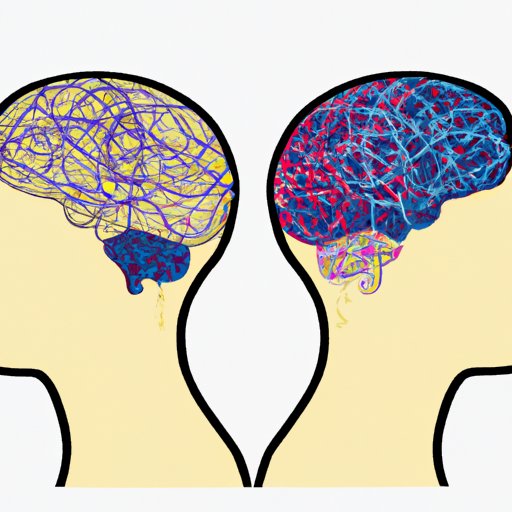
The Power of Mental Mapping: Understanding How Our Minds Organize Information
Have you ever stopped to think about how your brain organizes the vast amounts of information it receives every day? From the name of the barista at your favorite coffee shop to the fastest route home, our minds create maps to help us navigate the world around us. These internal maps are called mental maps and they play a crucial role in how we process, store, and use information to make decisions.
What is a Mental Map?
Mental mapping is the cognitive process of creating visual representations of information in our minds. These maps can take many forms, from spatial arrangements to lists or webs of related concepts. Our brains rely on these maps to organize and categorize large amounts of information in a way that is easy for us to understand and use.
Mental maps work by linking related information together, creating a web of associations that allow us to access and retrieve information quickly and efficiently. For example, if you think about your home, you likely have a mental map of the rooms, furniture, and layout of your living space. When you think about your couch, your mind automatically accesses the mental map of your living room, allowing you to recall where the couch is and what it looks like without consciously searching for the information.
Why Are Mental Maps Useful?
One of the primary benefits of mental mapping is that it allows us to process and retain information more effectively. When we create mental maps, we are actively engaging with the information and creating a more meaningful relationship with it. This can help us remember the information better and recall it more easily when we need it later on.
Mental maps can also help us make connections between seemingly disparate information, allowing us to see patterns and relationships that might not be immediately apparent. This can be especially useful in problem-solving and decision-making contexts, where mental mapping can help us identify potential solutions or approaches that we might not have considered otherwise.
Creating and Using Mental Maps Effectively
If you’re new to mental mapping, it can be helpful to start with a basic visual representation of the information you want to organize. This might be a simple mind map with a central topic and several related subtopics, or it could be a more complex diagram that includes images or other visual aids.
When creating a mental map, it’s important to keep in mind the overall purpose of the map and the specific information you want to include. Try to keep the map as simple and streamlined as possible, focusing only on the most important and relevant information.
Mental maps can be used in a wide variety of contexts, from work and school to personal hobbies and interests. For example, you might use a mental map to organize your notes for a class or to plan out a writing project. You could also create a mental map to keep track of your goals and aspirations, or to organize ideas for a new business venture.
Improving Memory and Spatial Awareness with Mental Maps
Research has shown that mental mapping can have a positive effect on memory and spatial awareness. In one study, researchers found that participants who engaged in mental mapping were better able to recall spatial information than those who did not. Another study found that mental mapping can improve spatial awareness and navigation skills in adults with traumatic brain injuries.
To use mental maps to improve memory and spatial awareness, try to create as detailed and vivid a mental image of the information as possible. You might also try incorporating multiple senses into your mental map, such as imagining the smell or sound associated with a particular location or object.
Mental Maps and Perceptions
Mental maps can also play a role in how we perceive the world around us. Our internal maps can shape our beliefs and attitudes about people, places, and things, either reinforcing stereotypes and biases or challenging them.
One way to become more aware of our mental maps is to actively seek out new experiences and challenge our assumptions about the world. This might involve traveling to a new place or learning about a different culture or belief system. By expanding our horizons and exposing ourselves to new ideas, we can begin to see the world in a more nuanced and multi-faceted way.
The Role of Mental Maps in Decision-Making
Mental maps can also have a powerful effect on our decision-making processes. Our internal maps can shape our perceptions of a situation or problem, leading us to make biased or subjective decisions. For example, if we have a mental map that associates success with financial wealth, we might be more likely to make decisions that prioritize our financial gain over other considerations.
To use mental maps to make more informed and objective decisions, it’s important to challenge our assumptions and seek out alternative perspectives. This might involve asking for input from others or seeking out information that contradicts our mental maps. By approaching decision-making with an open mind and a willingness to consider multiple viewpoints, we can improve the quality of our decisions and avoid becoming stuck in a mental rut.
Conclusion
Mental maps are a powerful tool for organizing and processing information, improving memory and spatial awareness, and shaping our perceptions of the world. By becoming more aware of our internal maps and learning to create and use them more effectively, we can become more effective problem-solvers, more objective decision-makers, and more engaged and informed citizens of the world.




